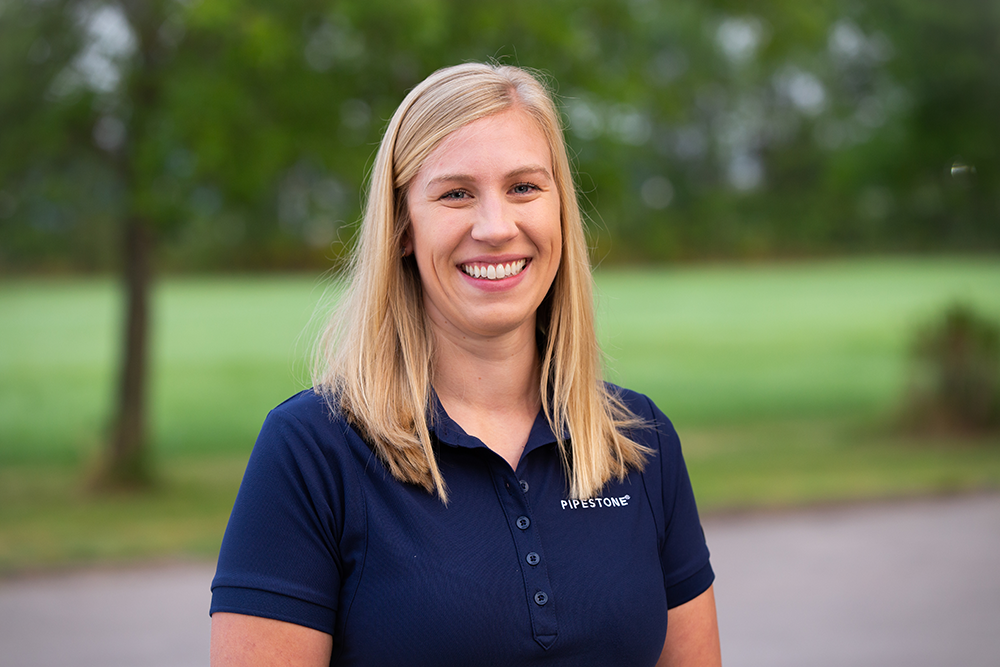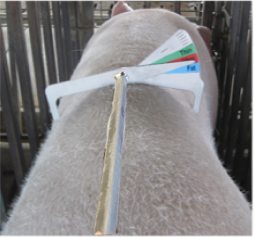
Innovation in nutrition comes in many forms at PIPESTONE. From new technology, to better feed management, to improving the feed quality across our 40+ feed mills that feed sows managed by Pipestone Management, we are continually investigating ways to bring value.
What does the body condition of an “ideal” sow look like in your mind? If we asked this question to 15 different people, we would likely get 15 different answers. Achieving ideal sow body condition plays an important role during many stages of a sow’s reproductive cycle including embryo survival, sow milk production, piglet weaning weight and wean to first service interval. Historically, we evaluated sow body condition with our eyes and handling the sows. This created a lot of variation since everyone has a slightly different opinion of “ideal” condition. Although not intentional, a herd can drift fat or thin depending on the “eye” of the person assigning a body condition score. Overfeeding can be very costly to a farm.

What is the downside of variation of body condition in a sow herd? Both thin and fat sows create a problem in sow herds. Many research trials have demonstrated that a fat sow at farrowing will have lower feed intake in lactation, wean lighter litters, lose more backfat, and take longer to breed back. On the flip side, thin sows also pose a risk with poorer reproductive performance and a greater chance to exit the herd. Both types of sows are costly to the system in terms of feed cost and decreased production. By maintaining sows in “ideal” body condition, we avoid the “yo-yo” of fat sows becoming thin during lactation, then having to increase feed allowance in early gestation to recover condition.
In the sow farms managed by Pipestone Management, we recently implemented the use of the sow caliper. This tool provides an objective measurement of sow body condition. Anyone can be trained to use the caliper and identify if a sow is thin, ideal or fat, then adjust the feed box accordingly. This tool has allowed us to reduce the variation in sow body condition and feed usage across the system. On average, sow feed intake decreased by 0.1 lb/day, a feed savings of $750,000/year across 280,000 sows.
As we continue to improve our production system, maintaining sow body condition through feed management will continue to save money, reduce variation in the herd, and have positive impacts on production. We are continuously exploring other ways to measure sow body condition and weight through cameras that can further improve our accuracy and efficiency.
Feed bin scales are another tool that several sow farms managed by Pipestone Management have installed to help with the feed ordering process. These scales measure how much feed remains in the bins and can be viewed by farm managers and our feed order desk. This allows our feed order desk to communicate to the feed mill which bins will need feed delivered the soonest, which helps prioritize multiple feed deliveries to the farm. As new bin tracker technology becomes available, we will continue to evaluate which avenue provides the greatest accuracy in feed orders, prevents out of feed events, and improves safety by eliminating the need to frequently climb bins to check feed level.
Aside from feed management and technology, improving the quality of feed delivered to sows is another area we have placed a large emphasis on. Over the past couple months, our team has worked to develop a 5-Star feed mill program that encompasses scores for biosecurity, ingredient prices, particle size, mycotoxin levels, and uniformity of mixing for feed mills. This information helps us understand the quality of feed that enters the sow farm, assess risks, and help keep the feed mill accountable. Afterall, it’s hard to change something you don’t measure. Not only does it help us improve feed quality, but it serves as a tool to educate the feed mill employees on how different variables at the feed mill can affect the sow farm.
Feed is the largest cost of raising pigs, and that has remained constant over the years. However, as nutritionists we have to challenge ourselves to keep searching for efficiencies in formulation, feed quality and management, that will continue to bring value to sow farms managed by Pipestone Management and the shareholders for years to come.
By: Kiah Gourley, PIPESTONE Nutritionist
